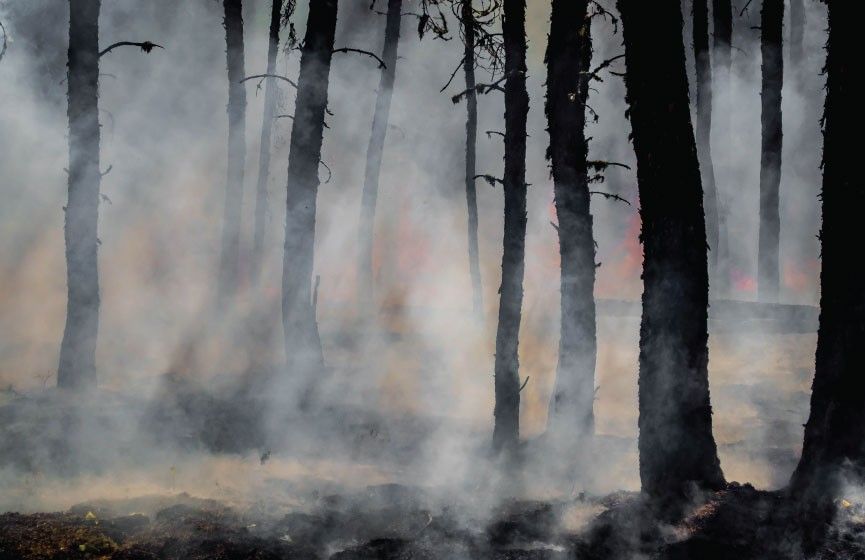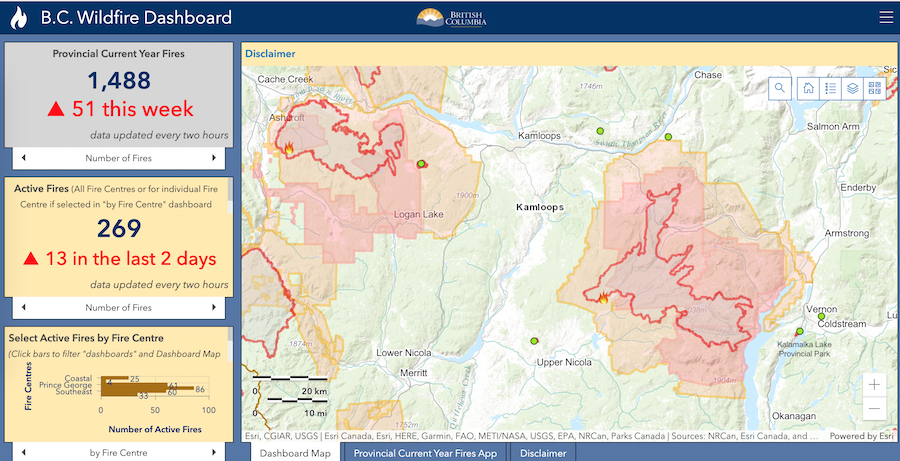The Holm Stretch August 13, 2021
In This Issue
How are you doing?
If you are like us, you feel a little on edge, a tad uneasy with a sore throat, possibly some sinus issues, and headache. You may feel "thirsty." Scroll to the bottom to learn the 10 tips we found about Coping With Wildfire Smoke from a public health expert.
IN Real Estate:
Active inventory has clawed its way back up to 662 properties in the North Okanagan. This is down slightly from last Friday. 33 Homes sold between Aug 6 - 12, and the average sale price was $878,995. Days to sell ranged from 3 to 140 with the average being 39 days. Sale prices ranged from $ 337,000 up to $2,600,000. in North Okanagan home sales.
Here is a look at the Fire situation as of 2021-08-13 at 9.43.30 AM focused on the larger threats in the interior.
Take care, Have Fun & Talk soon,
Chris, Brell, Patric, Diane, Grace, & Terra.
In Case You Missed It
New Listings and Coming Soon
SEE our coming soon listings on our Google Map and also the latest MLS® Listings show up here prior to uploading to REALTOR.ca but they only stay here for 24 hours.
About Town
Just Sold
5958/5960 Old Kamloops Rd | Vernon, BC | $2,790,000
Well known as Durali Villa, this beautifully designed mansion encompasses class and charm ...
Weekly Market Monitor
3
New Listings
4
Listings Sold
1
Price Increase
3
Price Reduction
35
New Listings
41
Listings Sold
0
Price Increase
12
Price Reduction
6
New Listings
6
Listings Sold
0
Price Increase
1
Price Reduction
10 tips for coping with wildfire smoke, from a public health expert
We wanted to share this article from UBC by Dr. Sarah Henderson:

1. Understand your susceptibility
Some people are at higher risk of experiencing health effects from smoke, especially those who have asthma, COPD, heart disease, diabetes, other chronic conditions or acute infections such as COVID-19.
Pregnant women, infants, young children, older adults and people who work or live outdoors are also more susceptible. Anyone who uses rescue medications should carry them at all times.
2. Listen to your body
Different people can have very different reactions to the same amount of smoke. If you feel unwell, listen to your body and take actions to reduce your exposure.
The most common symptoms include eye irritation, sore throat, cough and headache, which usually disappear when the smoke disperses. Anyone who has more severe symptoms such as difficulty breathing or heart palpitations should seek medical attention.
Smoke is an environment hazard to be respected, not a personal challenge to be overcome.
3. Take it easy
The harder you breathe, the more smoke you inhale. The average resting adult breathes about six litres of air per minute, but this can easily increase to 60 litres during intense exercise.
Taking it easy is one of the simplest ways you can limit your exposure.
4. Use a portable air cleaner
Portable air cleaners with HEPA filters can significantly reduce indoor PM 2.5 concentrations when used properly. Smaller units can be used to keep one room relatively clean as a place to seek relief when needed.
A high quality furnace filter taped to a box fan can also do a pretty good job in a small room, although do-it-yourself devices should never be left running unattended.
5. Seek comfortable spaces in the community
Public places such as libraries, community centres and shopping malls often have large air filtration systems and relatively good indoor air quality. Unfortunately, access to some of these spaces may be restricted during the COVID-19 pandemic, so making a comfortable space at home is more important than ever.
6. Consider wearing a protective mask
One silver lining of the COVID-19 pandemic is that we have learned new things about face masks. Although a well-fitted N95 respirator will always be the best option for wildfire smoke, recent research shows that other masks can provide reasonable protection from PM 2.5 if they are closely fitted around the face. Masks with multiple layers of different materials were the best for filtering fine particles.
7. Drink plenty of water
I know, I know… everyone is always telling you to drink more water. Staying well-hydrated helps the kidneys and liver to remove toxins, which can reduce any systemic inflammation caused by wildfire smoke exposure.
8. Know where to find information
The air quality impacts of wildfire smoke can change fast. Know how to stay updated on conditions in your area. Smartphone apps such as the Air Quality Health Index (AQHI) in Canada and SmokeSense in the United States can send alerts when air quality starts to deteriorate.
9. Pay attention to wildfire smoke forecasts
Forecasting wildfire smoke is even more difficult than forecasting the weather, but the models are improving every year. Tools such as FireWork in Canada and BlueSky in the U.S. show smoke predictions for the next 48 hours.
10. Start preparing for next season now
Wildfire seasons are getting longer and more extreme as the climate changes. The best way to protect yourself from smoke is to plan and prepare well before the smoke arrives. There is increasing recognition that we must learn to live with wildfire and smoke in western North America.
On that note, I often get asked about the long-term health effects of extreme and repeated wildfire smoke exposures. Not much is known at this time, but it is an area of active research and I think we will learn a lot in the next five years. Even so, please remember that taking action to reduce exposure in the short-term will also help to protect you and your family in the long-term.![]()
.png)
.png)




